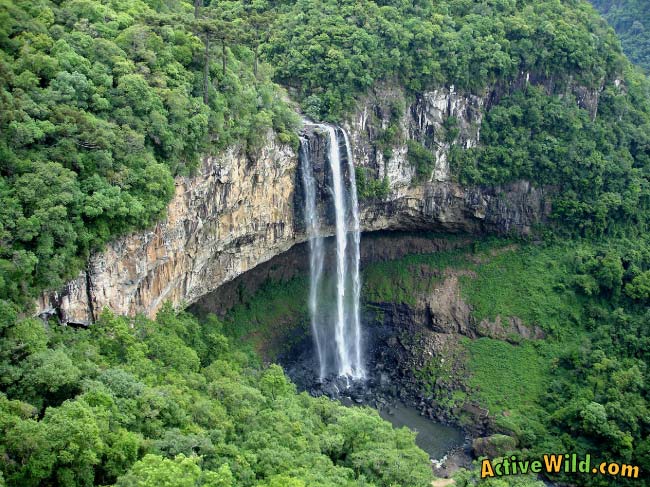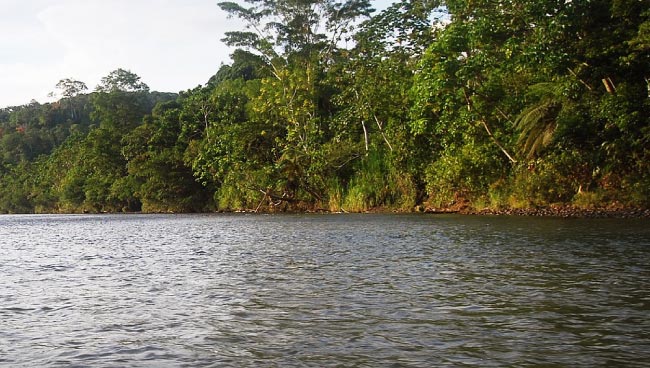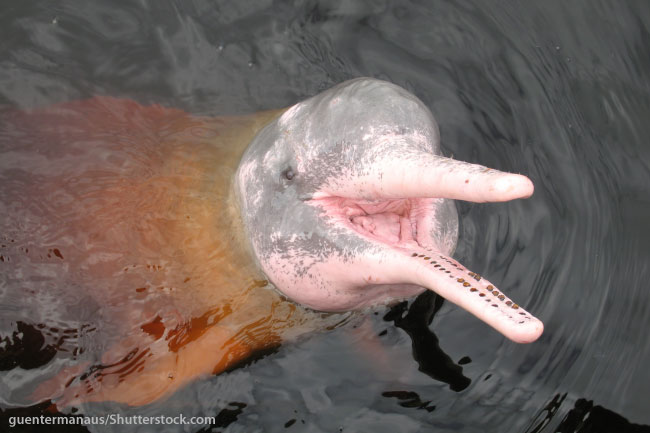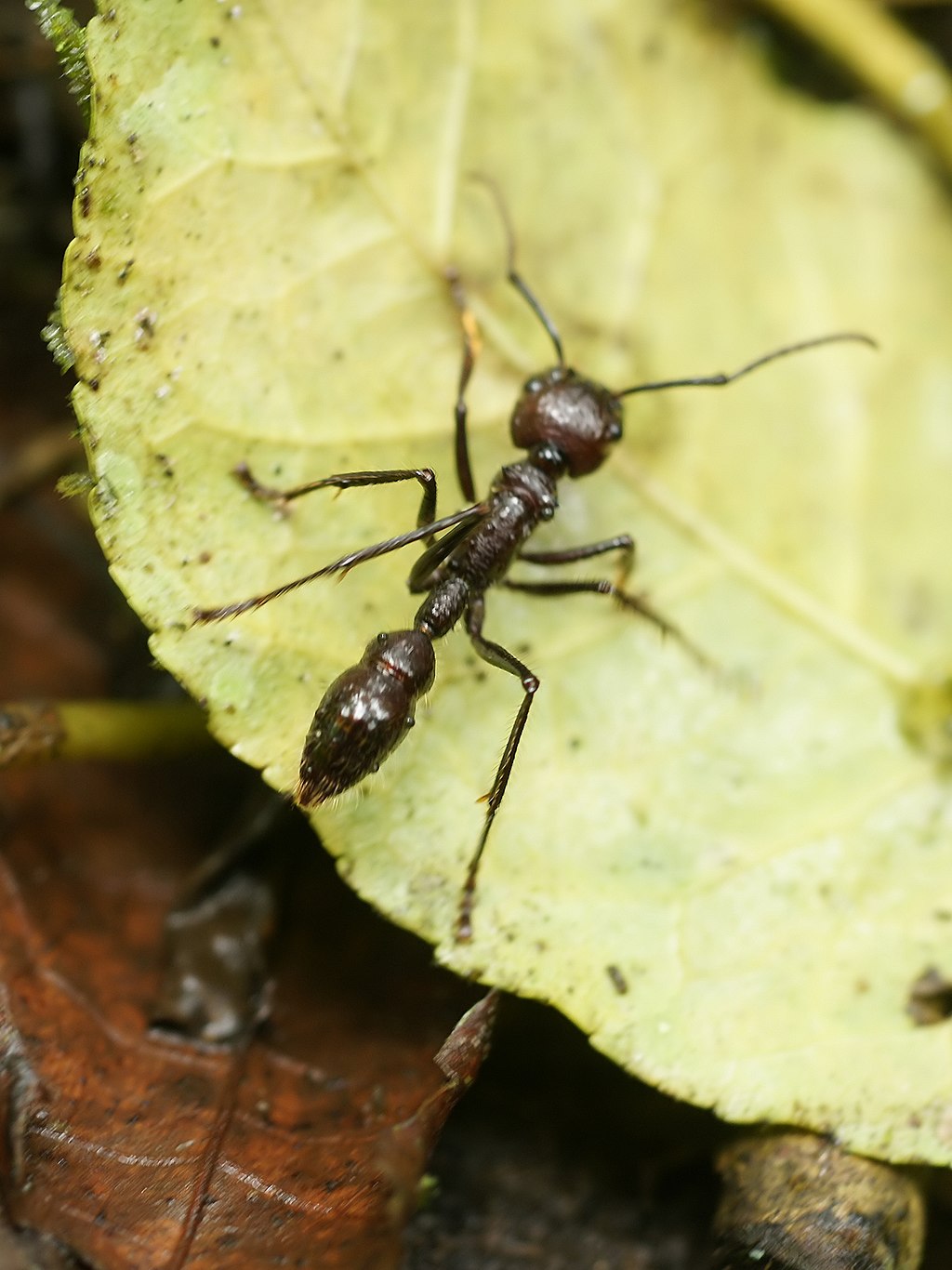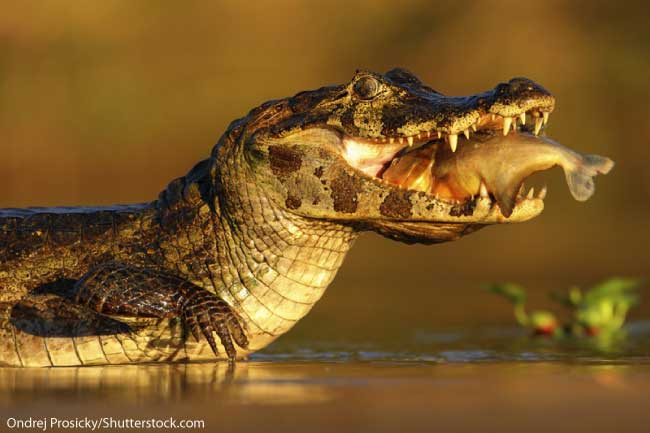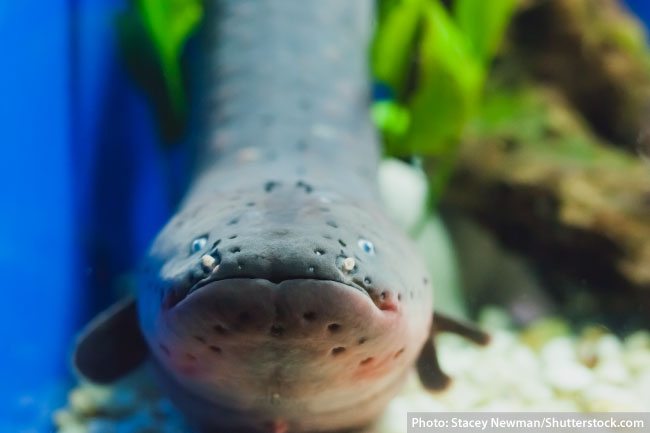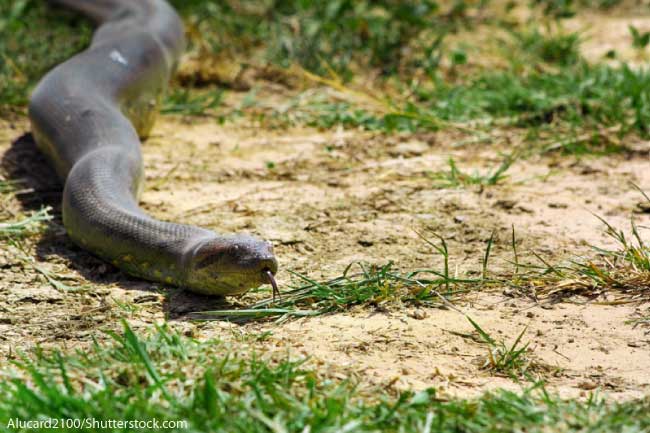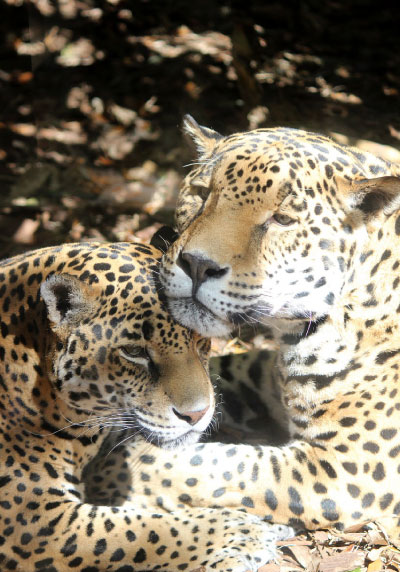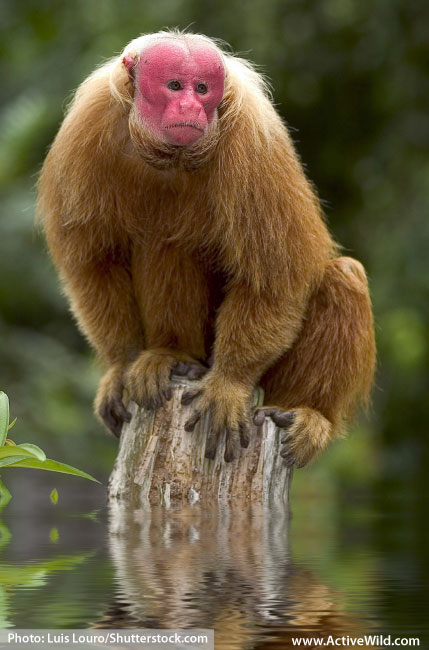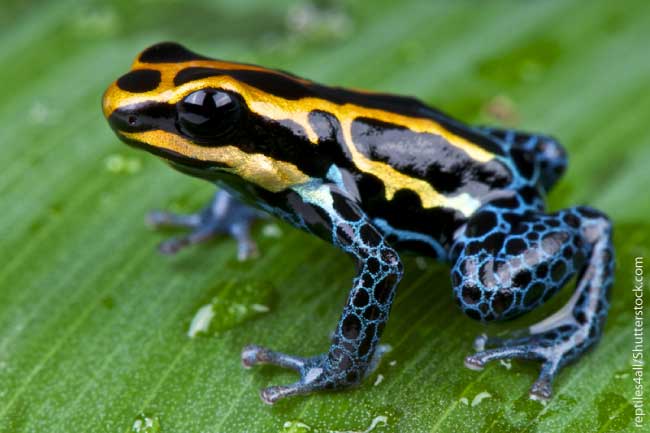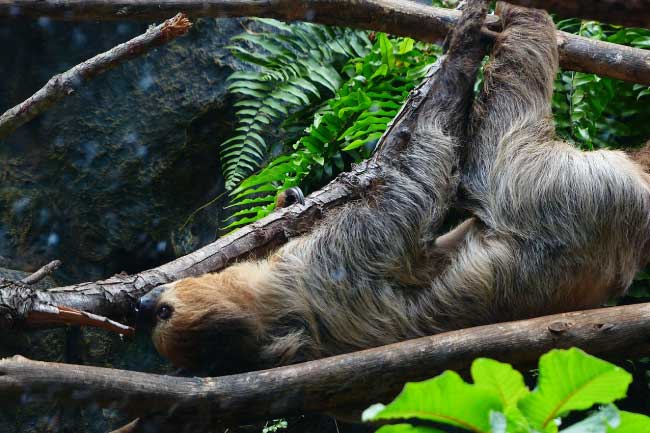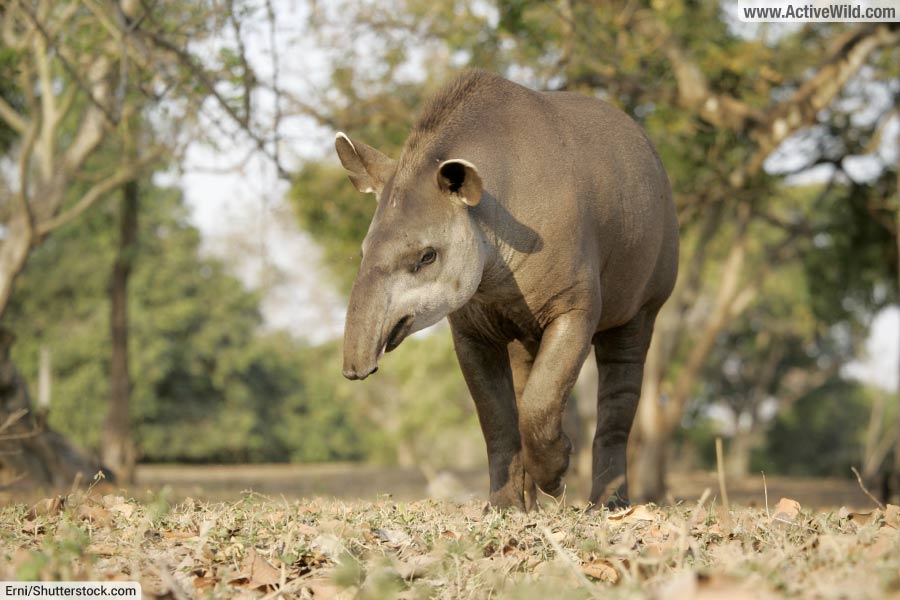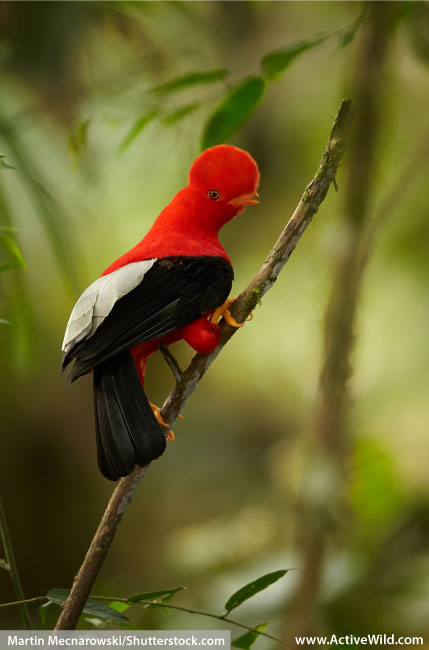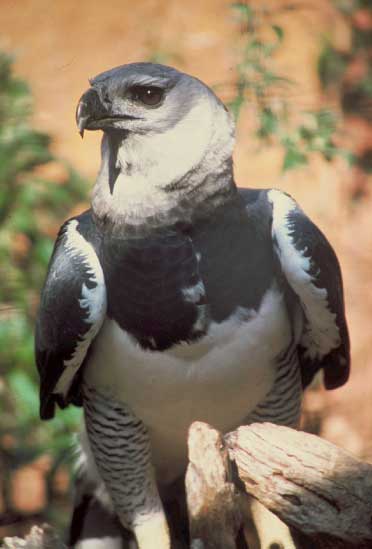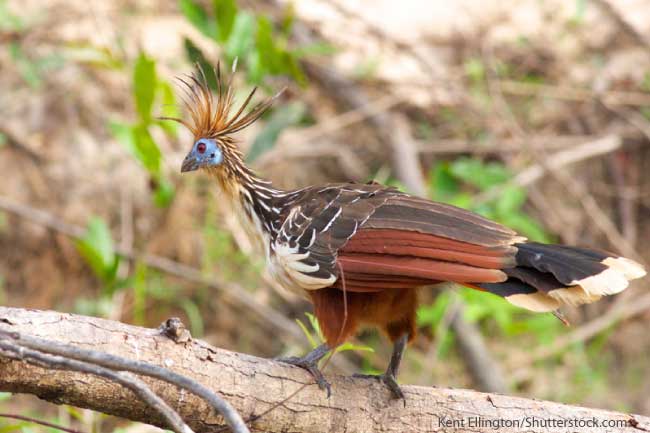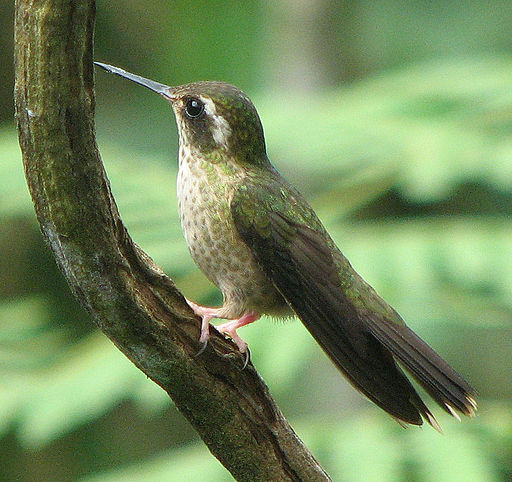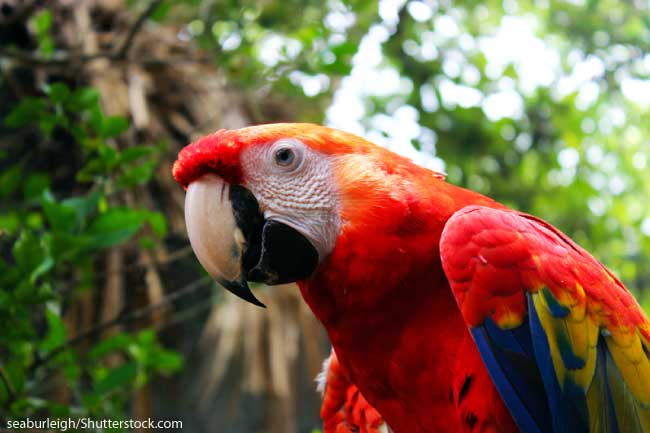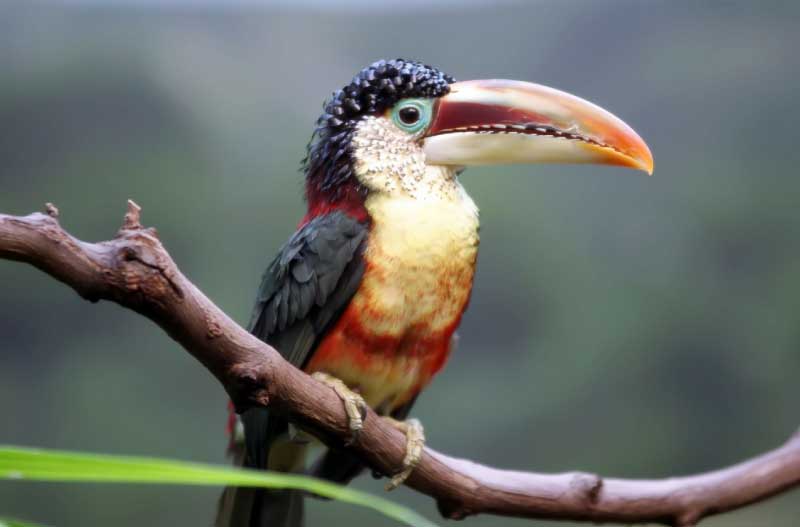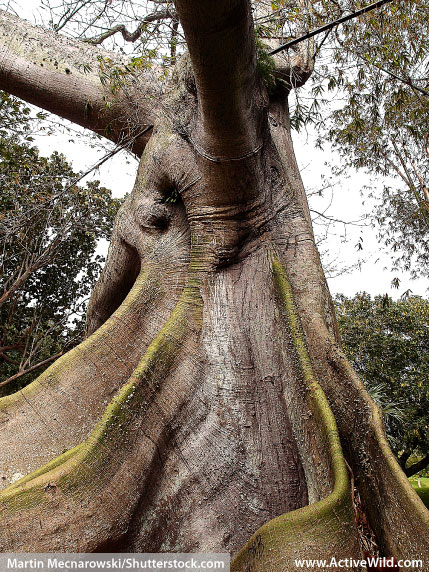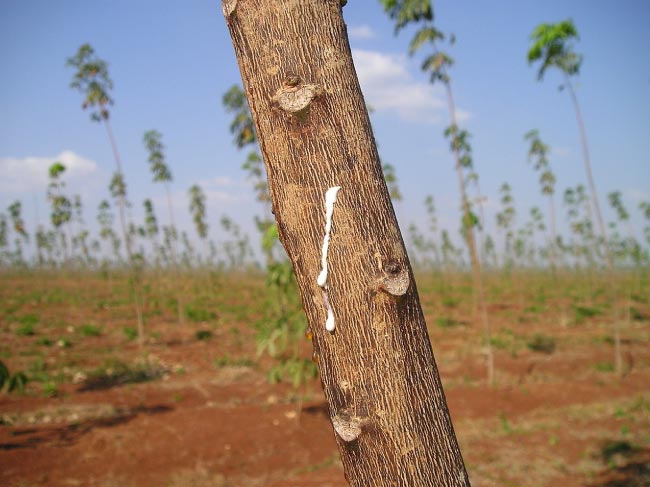What Is In The Amazon Rainforest? On this page we’re going to be meeting the animals, plants and people that live in the Amazon Rainforest.
The introduction sets the scene with some amazing Amazon facts. After this you'll find an illustrated list of Amazon animals and birds.
- This article is part of our Rainforest Facts series.
If you enjoy this article, be sure to share it on social media using the buttons above!
What Is In The Amazon Rainforest: Introduction
The Amazon Rainforest is a tropical rainforest located in South America. It is the biggest tropical rainforest in the world, and home to a vast number of animals and plants, many of which are found nowhere else on Earth.
One in ten of all of the world’s plant and animal species are found in the Amazon Rainforest. There are many more species living in the region that are yet to be discovered.
The Amazon Rainforest also provides a home to millions of people, including indigenous tribes whose lives are largely unaffected by modern life.
- You can find out more about tropical rainforests here: What Is A Tropical Rainforest?
What Is The Amazon Rainforest?
Before we find out what is in the Amazon Rainforest, here are some quick facts about the forest itself...
(Scroll past this bit if you want to get straight to a list of Amazon animals and plants!)
The Amazon Rainforest is the world’s biggest rainforest. Located in South America, the Amazon Rainforest covers an area of 5.5 million square kilometers (2.1 million square miles).
The Amazon Rainforest covers parts of nine countries (eight South American countries and French Guiana, an overseas territory of France).
- Don't know where the Amazon Rainforest is? Find it on the maps on this page: Where is the Amazon Rainforest Located?
60 percent of the Amazon Rainforest is in Brazil, 13% is in Peru and 10% is in Columbia. The forest also enters parts of Venezuela, Ecuador, Bolivia, Guyana, Suriname and French Guiana.
The Amazon Rainforest is located in the Amazon Basin – the area of land that drains into the Amazon River. The Amazon Basin covers 7 million square kilometers (2.7 million square miles) – that’s around 40% of South America!
The Amazon River is the world’s biggest river by discharge (the amount of water that flows through it). It discharges an incredible 6,591 cubic kilometers per year (1,581 cu miles per year). The amount of water carried by the Amazon River is so great that even 160 km (100 miles) from the coast the seawater is still noticeably less salty!
The Amazon River may also be the world’s longest river: arguments continue over whether this title is held by the Amazon or the Nile.
A 2007 study (carried out by Brazil and Peru) gave the length of the Amazon River as 6,992 km (4,345 miles). This would make the Amazon River the world’s longest river.
What Is In The Amazon Rainforest: Animals
The Amazon Rainforest is home to the biggest collection of plant and animal species in the world. There are over 400 mammal species, over 400 amphibian species, and over 370 reptile species living in the region.
Scientists estimate that there are a staggering 2.5 million insect species present in the Amazon Rainforest!
Below is a list of just a few of the animal species found in the Amazon Rainforest. (Scroll down to see Amazon Rainforest birds and plants.)
Amazon River Dolphin / Pink River Dolphin
This freshwater dolphin lives in the river systems of the Amazon Basin. As it gets older, it becomes increasingly pink in color, giving it its alternative name, ‘pink river dolphin’.
Arrau Turtle
The Arrau Turtle is found throughout the Amazon Basin. It is the largest species of side-necked turtle, growing to 1 m (3.3 ft.) in length. (Side-necked turtles withdraw their heads into their shells sideways.)
Blue Morpho
The Blue Morpho is a large, brilliant blue butterfly. The undersides of its wings are brown, which makes the butterfly appear to be ‘flashing’ when it flies. This makes it hard for predators to get a fix on the Blue Morpho’s position.
- More information: Blue Morpho
Bullet Ant
The Bullet Ant's sting is said to be the most painful of all insect stings and bites. The intense pain is likened to being shot, which is how the Bullet Ant got its name.
Capybara
The Capybara is the world’s largest rodent. This social mammal lives in groups by rivers and lakes, and is an excellent swimmer. It is able to dive for several minutes to escape a predator.
- More information: Capybara
Caiman
Caimans are members of the crocodile family. There are six species of Caiman, ranging in size from the Cuvier's dwarf caiman, which grows to 1.5 m (5 ft.) in length, to the 5 m (16.5 ft.) Black Caiman, a ferocious and dangerous rainforest predator.
- More information: Caiman
Catfish
There are several species of large catfish found in the rivers and flooded forests of the Amazon Basin. One of these is the Redtail Catfish, which grows up to 1.8 m (6 ft.) in length and is highly-prized by anglers. Many Amazon catfish are caught for food by local people.
Electric Eel
Although eel-like in appearance, the Electric Eel is actually a fish. This large and potentially dangerous animal is able to produce an electric charge which it uses both to stun prey and to defend itself.
Giant Otter / Giant River Otter
The Giant Otter is the longest member of the weasel family (the heaviest member of this family is the Sea Otter). The Giant Otter lives along the Amazon River and in the Pantanal – a large tropical wetland area which covers parts of Brazil, Bolivia and Paraguay.
Green Anaconda
The Green Anaconda is the heaviest species of snake, although not the longest. It is an excellent swimmer, and spends much of its time in water.
- More information: Green Anaconda
Goliath Birdeater
The Goliath Birdeater is the largest spider in the world by mass. A member of the tarantula family, the Goliath Birdeater lives in marshland and swamp areas of the Amazon Rainforest.
Jaguar
The Jaguar is the largest member of the cat family found in the Americas, and the third-largest in the world. It is an apex predator, capable of taking species such as caimans, tapirs and deer.
- More information: Jaguar
Monkeys
The Amazon Rainforest is home to many different species of monkey. Capuchins, marmosets, tamarins, uakaris, howler monkeys and spider monkeys are all present in the area.
- More information: Rainforest Monkeys
Ocelot
The Ocelot is a mid-sized wild cat found throughout the Amazon Rainforest. It has a gold coat marked with black rings and stripes, giving it the alternative name of ‘Dwarf Leopard’.
- More information: Ocelot
White-Lipped Peccary
The White-Lipped Peccary is a pig-like mammal that lives in Central and South American rainforests. It lives in herds which can number from 20 to several hundred.
Poison Dart Frogs
There are over 170 species of Poison Dart Frog, many of which are brightly colored and poisonous. Local tribesmen use the frogs’ toxic secretions to poison the tips of their arrows and blow-darts, hence the frog’s name.
- More information: Poison Dart Frog
Sloths
Sloths are mammals that spend many hours hanging upside-down from tree branches. They only leave the trees for brief periods, and are so slow-moving that insects and algae live in their fur.
- More information: Sloth
Tapirs
Tapirs are large plant-eating mammals that are pig-like in appearance. There are five species of tapir, four of which are found in South America. Tapirs have long snouts which are able to grab and manipulate food.
- More information: Tapir
Tree Frogs
Several species of tree frog are found in the Amazon Rainforest, including the Mission golden-eyed tree frog and the Map Tree Frog. Many Amazonian tree frogs lay their eggs in water contained within the leaves of Bromeliad plants.
- More information: Red Eyed Tree Frog
What Is In The Amazon Rainforest: Birds
Birds are, of course, animals (and if you didn’t know that, then you should read this article: (Are Birds Animals?). However, seeing as the birds of the Amazon Rainforest are so special, they deserve a section of their own!
Estimates vary as to exactly how many bird species are found in the Amazon Rainforest. Some go so far as to say that almost half of the world’s birds are found in the region. Other estimates are more conservative, stating that the figure is nearer one in every five: an impressive statistic nonetheless.
Over 1,200 bird species live in the Amazon Rainforest. Let’s meet some of them …
Below is a list of just some of the bird species found in the Amazon Rainforest.
Amazon Kingfisher
The Amazon Kingfisher is a large kingfisher found by rivers, streams and lakes in the Amazon Rainforest. They find a suitable perch by the waterside, then dive into the water head first to catch passing fish.
Cock-Of-The-Rock
The male Cock-Of-The-Rock is a strikingly-colored bird, with bright orange plumage. Many birdwatchers are drawn to South America for a glimpse of these shy birds.
Harpy Eagle
The Harpy Eagle is one of the world’s largest eagles. It hunts silently in the trees, and is quite capable of picking off a monkey or a sloth.
- More information: Harpy Eagle
Hoatzin
The Hoatzin is also known as the ‘stinkbird’, on account of the unpleasant odor produced by the bird’s unusual, cattle-like method of digesting food.
Hummingbirds
Over 300 species of hummingbird are found in the Amazon Rainforest. Among the smallest of all birds, these nectar-eating specialists are able both to hover and fly backwards.
Jabiru Stork
The Jabiru Stork is South America’s tallest flying bird, and has the second-largest wingspan of any bird found in the continent. It lives near water, and wades in shallow water to find food.
King Vulture
The King Vulture is a large and distinctive bird that is found throughout the Amazon Rainforest. It soars over the treetops using its powerful eyesight to find carrion.
Masked Trogon
Found in montane rainforests, the Masked Trogon is a colorful species that nests in tree hollows and feeds on fruit and insects.
Scarlet Macaw
The Scarlet Macaw is one of many parrot species that inhabit the Amazon Rainforest. This brightly-colored bird uses its powerful bill to feed on seeds, nuts, and a variety of fruits, leaves and flowers.
Spectacled Owl
The white feathers that grow around the face of this large owl make it appear to be wearing glasses, which is how it got its name. The Spectacled Owl hunts at night, feeding mainly on small mammals.
Toucan
There are many species of toucan found in the Amazon Rainforest. These birds often have colorful plumages, and all possess a large bill which they use to feed on fruit. Toucans form an important part of the rainforest ecology, being seed dispersers.
- More information: Toucan
What Is In The Amazon Rainforest: Trees and Plants
An incredible number of plant species are found in the Amazon Rainforest. Estimates as exactly how many there are range from 40,000 to 80,000 species.
If you’ve ever wondered how many trees grow in the Amazon Rainforest, here’s your answer: scientists estimate that around 400 billion trees grow in the region!
The most common tree in the Amazon Rainforest is thought to be the Euterpe precatoria, a species of palm that grows up to 20 m (67 ft.) high.
Rainforest soil is surprisingly low in quality. Because of this, many Amazonian trees have buttress roots, which spread out from the tree above the ground to provide stability and increase their nutrient-gathering capability. The Kapok tree is an example of a tree with buttress roots.
Many of the trees and other plants that grow in the Amazon Rainforest are useful to man. Products that come from Amazonian plants include medicines, foods, cosmetics, and building materials.
The Brazilian Mahogany (Swietenia macrophylla), for example, is harvested for its high-quality brown timber.
The seeds of the Cacao, or cocoa tree (Theobroma cacao) are used to produce cocoa powder and chocolate.
Rubber trees (Hevea brasiliensis) are ‘tapped’ for latex (a substance used to make rubber).
- You can find out more about rainforest trees and plants here: Rainforest Plants.
What Is In The Amazon Rainforest: People
The Amazon Rainforest is home not only to plants and animals, but also to man. More than 30 million people live in and around the Amazon Rainforest. Many of these people rely on the forest for food, shelter and employment.
A number of indigenous tribes live in the Amazon Rainforest, living lives which are largely unaffected by the modern world. Tribes such as these are said to be ‘uncontacted’. A 2007 study identified 67 uncontacted tribes in Brazil.
What Is In The Amazon Rainforest: Conclusion
We hope that you have enjoyed this brief look at what is in the Amazon Rainforest. Of course, the contents of this page barely scratch the surface of the vast array of life present in the region. You can find out much more about life in the Amazon Rainforest, and other rainforests, in the articles below:
- Discover the animals of the rainforest: Rainforest Animals List With Pictures and Information
- Find out about rainforest plants: Rainforest Plants List
- Find out more about the Amazon Rainforest: Amazon Rainforest Facts.


